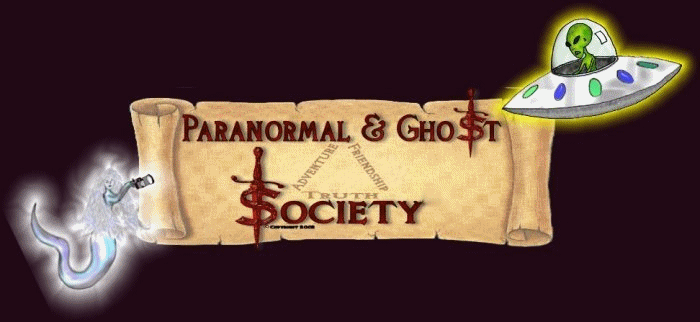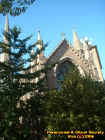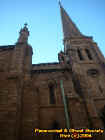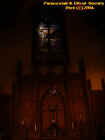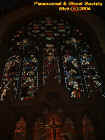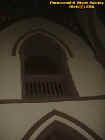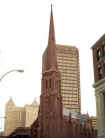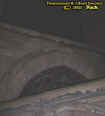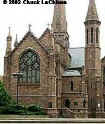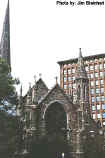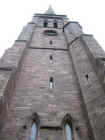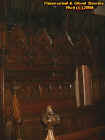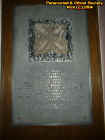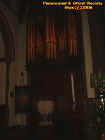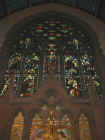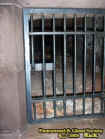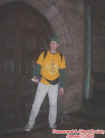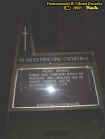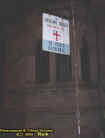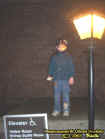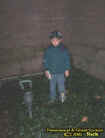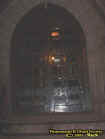|
|
||
|
St Paul's Church is over 175 years old and was incorporated in 1817.At this time it was not a cathedral yet. In 1819 the land for the church was donated by the Holland Land Company which a frame was built and St Paul's was the first Church in the village of Buffalo. Later after receiving 100 acres of land they sold the old frame church to the German Evangelical Church for 800 dollars then took the money from selling the land to erect a new frame. This would be designed by the famous architect Richard Upjohn who was notable for many famous church designs in NYC. The church was consecrated by Bishop DeLancey. In the 1850s the first set of bells were places in the bell tower and by 1866 Bishop Coxe took over the Vestry naming it a cathedral. Reverend Dr Shelton Died in the 1880s and the cathedrals high alter and pulpit were dedicated to him along with the nearby cathedral park which is now in use by St Josephs Cathedral around the corner. On Ascension Day, May 10, the church was almost entirely destroyed by fire caused by a natural-gas explosion. Dr. Israel, Rabbi of Temple Beth Zion, offered the free use of the Temple on Sundays until the church could be rebuilt. Whether deaths occurred in the fire I do not know. But 2 years later with haste the church was reconstructed, rebuilt and back in service. Then from 1890 to 1826 the church had a series of bishops and reverends that served in this church. In 1917 the 100 year old anniversary was celebrated and eventually the cathedral had communion. Then in 1926 for more bells were added to the cathedral. Then from 1926 to the 1970s many new additions were added here such as the chapel of the holy spirit, or a larger choir area. The Stain Glass Saints were added to the windows, a Tabernacle, Schlicker chancel organ, the Hope-Jones Organ was rebuilt and a oratory altar was added. The church then was painted inside, had an elevator added and the outside was cleaned up in 1986 it was named a historical landmark. After this time the celebration of the 175th anniversary took place and a new keyboard was added for the bells and the Chancel organ was rebuilt along with new lighting inside the cathedral. To this day St Paul's beauty is overwhelming and looks as it did back in time as it does today. So there you have a brief history on the cathedral. Now lets talk about the ghost. Is it not true that most churches in England are haunted especially cathedrals? So you can only imagine why we chose to investigate this place. As our imaginations ran wild. Thousands of people have attended mass and services here in the last 175 years. Reverends and Bishops have served here as they came and went. You can even walk around and read the dedications on the stained glass windows or the plaques which are on one of the entrance walls. There is even a playground for the children next door. This is a hauntingly beautiful place but there are also ghost that roam the church itself. Perhaps they are ghost of the people who use to attend here. Maybe the Bishops and Priest? But a mean looking baby hiding in the bushes, a little child ghost and a friendly looking man according to my son tells me many different ghost walk the property. The inside you can only imagine is even more haunted. I found this a pretty challenging church to investigate as there are not many dark areas so most of the ghost we caught here were caught with the grounds completely lit up. The thing about the ghost here is that they are at peace so a lot of them are not very photo friendly. Although an example of this was when we felt a cold spot around a corner I snapped a quick photo and caught something on the run looking at me. We wanted to bring you a story though on this place because it has a lot of history and most of the entities here are probably older and so you really don't get to appreciate it till you walk around this place a few times and feel it out. I did not want to get greedy and take tons of ghostly photos but rather I wanted to show you this is St Paul's and here is a few ghostly shots that surround the cathedral. To let your imagine run vivid and wild of the thought of this place being haunted. It is hard to believe that this cathedral is in downtown Buffalo who would ever think that such beauty could exist in the heart of the city? Perhaps that is why many of the departed chose to remain here. © By Rick-AngelOfThyNight
|
||
|
|
|
